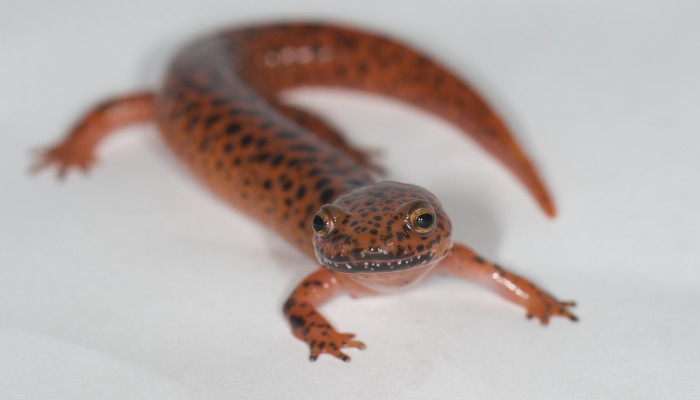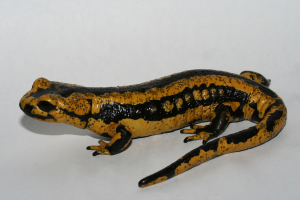
The United States Fish and Wildlife Service (FWS) announced on January 12th the designation of 201 species of salamanders as “injurious species” under the Lacey Act (1900). The interim rule bans the import or interstate transfer of listed species, effective January 28th. Following a 60-day public comment period, a final rule will be announced by the Service. The rapid move is an effort to prevent the introduction of Batrachochytrium salamandrivorans, also known as salamander chytrid, or more commonly, B.sal – a fungus that would be deadly to many native salamander species. B.sal has decimated salamander populations in Europe since its introduction there from Asia via the pet trade.

Fire salamander (Salamandra salamandra) covered with Batrachochytrium salamandrivorans ulcerations, which are visible as black spots (photo credit: F. Pasmans)
NECIS praises the swiftness and appropriateness of the action by FWS. NECIS has been a leader in raising awareness of the seriousness of the threat presented by the B.sal fungus since a study published in Science in October, 2014 identified the vulnerability of American salamanders and newts to the pathogen, via human-assisted introduction. That same year, NECIS began coordinating an informed coalition of environmental organizations, professional societies, and individual scientists on the issue. Because B.sal had been positively identified in a number of salamander species within the pet trade, and without any known treatment or preventative measure against the fungus, NECIS immediately began meeting with FWS and U.S. Department of the Interior (DoI) officials to urge them to institute a moratorium on the salamander trade. In June of 2015, NECIS held a Congressional briefing on the threat.
The best way to protect American wildlife and control the spread of non-native species, including pathogens, remains preventing their introduction in the first place. B.sal has not been identified in the United States at this point, but presents a serious threat to native salamanders. The U.S. boasts the widest diversity of salamanders in the world, which are important actors in their ecosystems. This science-based rule is an important step to protect the United States’ native salamanders.
